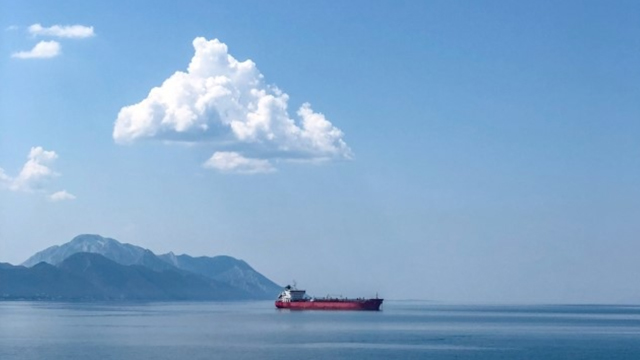Decisions on emissions at MEPC 78
The 78th MEPC meeting took place 6–10 June 2022, this time as a virtual event. Many topics were discussed, but in this blog post I’ll highlight the most important developments related to emissions compliance.
New SOx ECA in the Mediterranean Sea
The MEPC has agreed on creating a new SOx Emission Control Area (ECA). Comprising the entire Mediterranean Sea (with some exceptions for the Suez Canal), it will enter into force by 2025. When it does, the sulphur limit for fuel oil used on ships there will be 0.10% mass by mass (m/m), as opposed to the 0.50% m/m that applies outside of SOx ECAs.
There were, however, some objections related to the scale of international transport through this area. In particular, it was noted that five states around the Mediterranean Sea have not ratified MARPOL Annex VI, which means they will not be able to enforce the SOx regulation. The MEPC decided not to make their ratifications a prerequisite for entry into force, but the committee agreed to monitor the progress before final approval of the ECA at MEPC 79 in December 2022.
Guidelines for risk and impact assessment of the discharge water from scrubbers
MEPC 78 approved the guidelines for risk and impact assessment of the discharge water from scrubbers as drafted by PPR 9. These guidelines were laid out in two circulars:
- 1/Circ.899 on 2022 Guidelines for risk and impact assessments of the discharge water from exhaust gas cleaning systems
This circular provides information on the recommended methodology for risk and impact assessments. Member states should follow the methodology when considering local or regional regulations to protect sensitive waters/environments from exhaust gas cleaning system (EGCS) discharge water.
- 1/Circ.900 on 2022 Guidance regarding the delivery of EGCS residues to port reception facilities
This circular defines best practices to help ship operators and port states ensure the proper management and disposal of EGCS residues, including the delivery of stored EGCS discharge water into port reception facilities.
There was a last-minute proposal to append externally derived scrubber emission factors to the risk and impact assessment guidelines. It was not accepted, however, since the committee had not been given ample time to consider the background of the proposed factors. Nonetheless, the MEPC invited members to submit further information in this regard. Moreover, it was agreed that the guidelines should be kept under review, due to concerns raised about their scientific integrity and legal aspects that might be in breach of UNCLOS principles.
This means that emission factors will be discussed once again at MEPC 79. For PPR 10 in April 2023, the plan is to draft text changes to MARPOL Annex VI. The changes would enable nations to set up stricter discharge limits or to ban scrubber discharges in general if they wish to do so, giving them the possibility to enforce such regulations within their EEZ – not only within their territorial sea, as UNCLOS prescribes. The principle is familiar from the SOx and NOx ECAs. Nations can apply to IMO to become an ECA extending to the EEZ boundary, forcing the use of a 0.10% sulphur fuel oil (or the equivalent) or Tier III NOx compliance from new ships, respectively.
Carbon capture and storage
For several years now, some states have pushed to include carbon capture and storage (CCS) in the Energy Efficiency Indexes (EEDI/EEXI) and Carbon Intensity Indicator (CII). This discussion was taken up again at MEPC 78. However, the committee decided that a concrete proposal for inclusion is needed, so further submissions were invited. Some states proposed including CCS in an upcoming lifecycle assessment (LCA) instrument addressing the well-to-wake emissions of fuels, or perhaps making it part of the Data Collection System (DCS) under IMO.
Greenhouse gas emissions
Matters relating to greenhouse gas (GHG) emissions were split into three subsections: revision of the Initial IMO GHG Strategy, finalization of CII (the outcome of ISWG-GHG 12) and future mid-and long-term measures (ISWG-GHG 11). I’ll briefly summarize the developments in each subsection.
-
Revision of the Initial IMO GHG Strategy
IMO has initiated the revision of the Initial IMO GHG Strategy and is currently setting up the terms of reference for the process. This is a difficult endeavour, mainly because developed countries and the small island states take for granted that the strategy needs to be strengthened. Not only do many developing countries object to it being a given, they also see relaxing the strategy as a possibility.
These divergent viewpoints made it very difficult for the chair of the meeting to sum up and conclude. In the end, wording such as “strengthening”, “tiered targets”, etc. had to be removed from the terms of reference for the revision process.
According to the work plan, the new revision should be ready for adoption at MEPC 80 in 2023, so that when the processing is complete it will enter into force no later than 2026.
-
Finalization of CII
The EEXI instrument was approved at the last MEPC session, so CII matters were the only issue left for final approval. What remained regarding CII as an instrument were “correction factors” and the reference lines and CII rating requirements for passenger ships. These were approved as proposed by the intersessional working group (ISWG-GHG 12 – details can be found in MEPC 78/WP.6).
-
Future mid- and long-term measures
IMO is still in the process of discussing mid- and long-term measures. The MEPC is considering the various proposals put forward and agreeing on whether or not to defer them to the “basket of measures”. Many models have been discussed, many of which look similar to each other. A few, however, are more distinct.
On a more specific note, the carbon trading system, which the European nations prefer, is not favoured by many other countries. Most countries would like a transparent system that would give shipping an upfront knowledge of future costs. For the majority, a tax is the preferable solution.

07-07-2022
